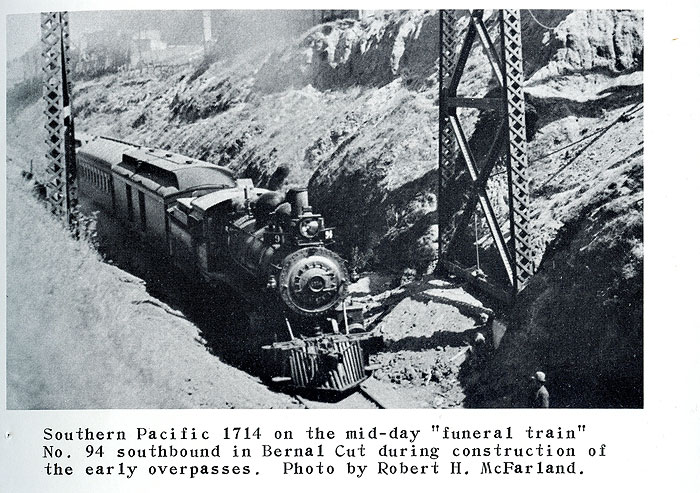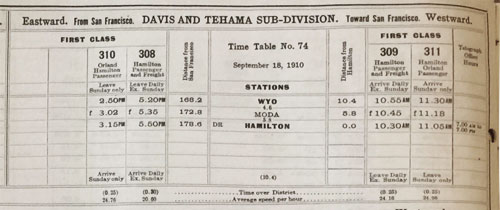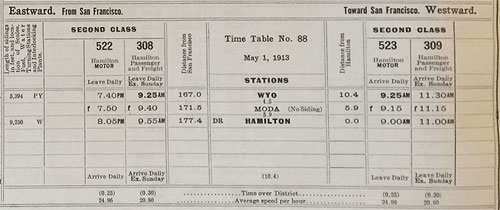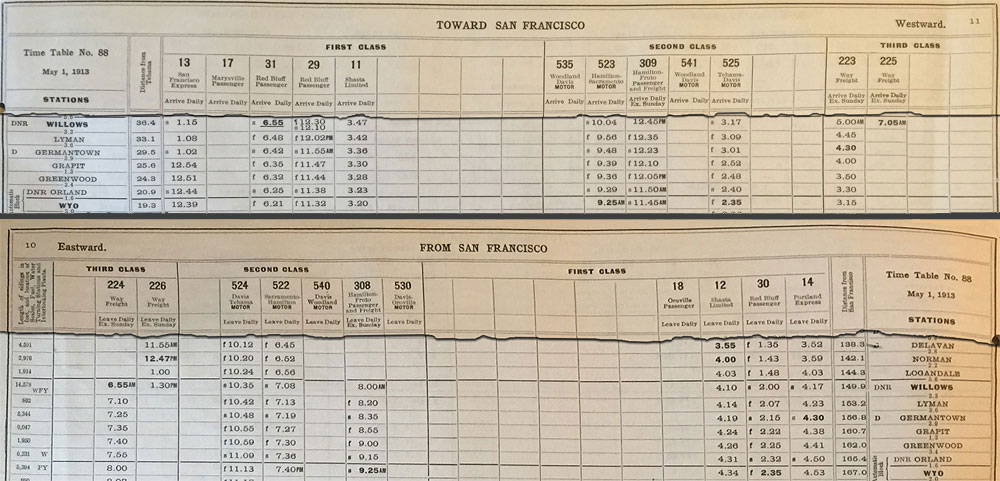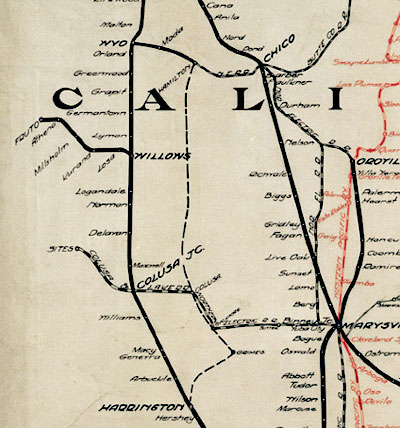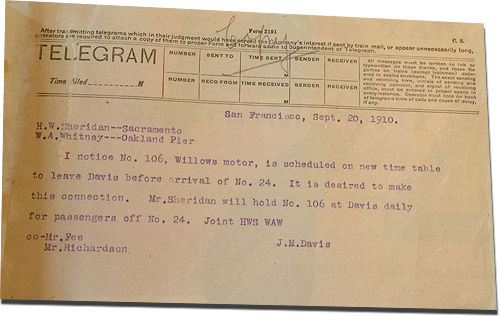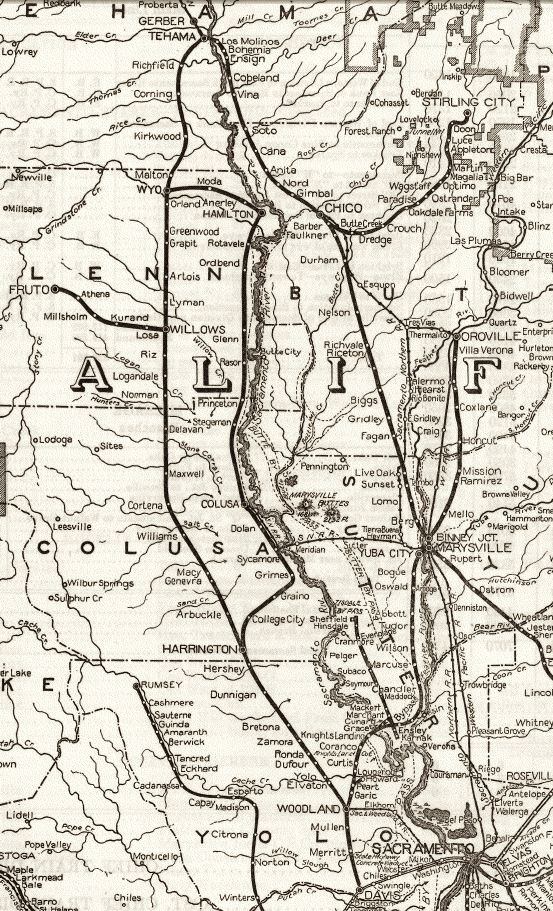| SP Index | |||||||||||||||
That I am able to give a precise location and a reasonably accurate date for this photo took a considerable amount of help from other folks. About ten years ago, I was gifted the photo of 1714, below, by my brother-in-law, Carl, who had come-across it in a Redding, CA antique store. I figured that the photo might have been taken in Red Bluff, due to the multiple tracks showing in the shot, along with the (very old) print's provenance. I posted the photo on Wx4 requesting information, and Ed Workman kindly placed the date at 1910-11, based upon equipment characteristics. I learned nothing more, and did nothing more until the summer of 2014, when I placed a "whazzit" question on TrainOrders.com. A host of people put forth helpful hints, but it was Tony Johnson who came up with the identity of the train. Some subsequent comparisons of the photo with some Sanborn Insurance maps, Google Maps, and the photos shown further below revealed the train's exact location with a high degree of probability. |
|||||||||||||||
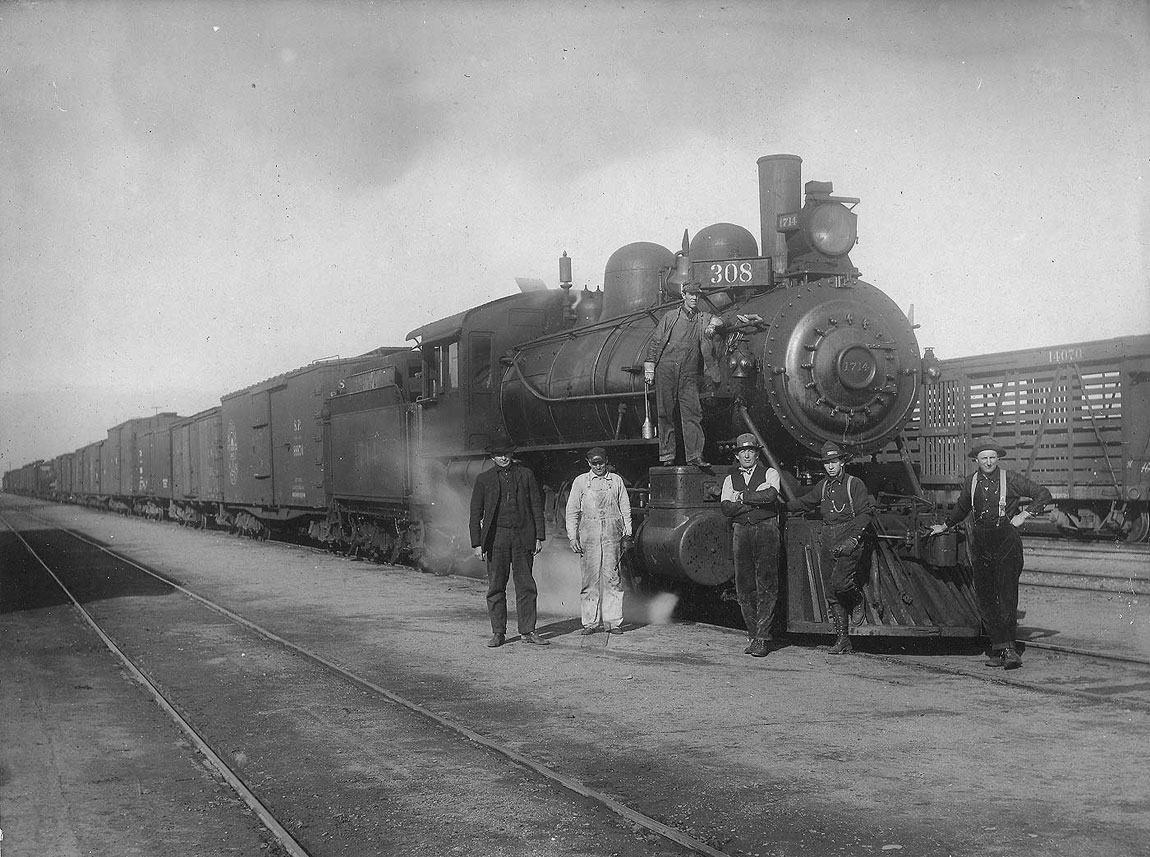 |
|||||||||||||||
| SP 1718 and crew at Willows, prior to departing for Hamilton City, circa 1910-11. Train #308 was listed in the SP's timetable as the "Hamilton Passenger and Freight", meaning that it was a mixed train. A blowup of the photo reveals no passenger car, so anyone wishing to ride would have been accommodated in the caboose. Most passenger no doubt chose to ride the daily motor car (likely McKean's) service between the two points, train #'s. 522-523. For much of the year, Willows' climate is quite temperate, or downright hot: summer temperatures average in the 90F range, and only during December and January do daily lows drop below 60F. Judging by the heavy clothes, and the sun angle (the locomotive is pointed due north) the photo was taken in the winter, not long before the train's 8:00AM departure time.
The following timetable information for #'s 308-309 came from an SP Sacramento Employee Timetable dated June 8, 1913, courtesy of Tony Johnson. |
|||||||||||||||
|
|||||||||||||||
|
|
|||||||||||||||
|
Location of the photo using 1912 map from the Sanborn Map Company:
|
|||||||||||||||
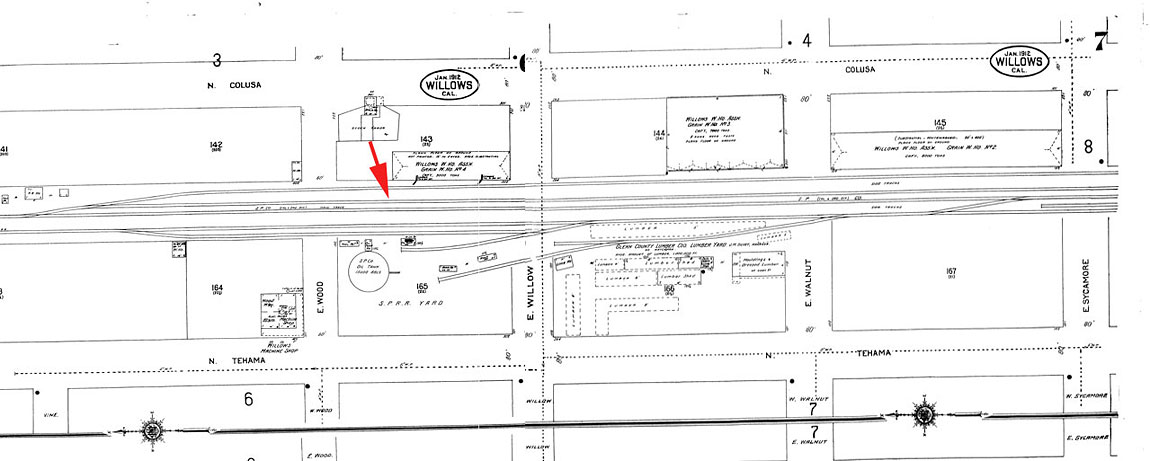 |
|||||||||||||||
A 1897 shows a turntable where the number 165 is shown to the right of the large oil tank in the "S.P.R.R. Yard", but a 1912 version does not, indicating that the engines and motors cars were being turned on the wye that formed the junction with the Fruto Branch, just north of town. The 1897 map does not show an oil tank, as S.P. locos were fueled here by coal at that time. The coal dock was located on the turntable lead track. The through track to which the turntable lead was connected was the Fruto Branch main track. The SP depot was located just barely outside of the map at right, on the southwest corner of Sycamore Street. |
|||||||||||||||
|
ADDITIONAL INTELLIGENCE January, 2019 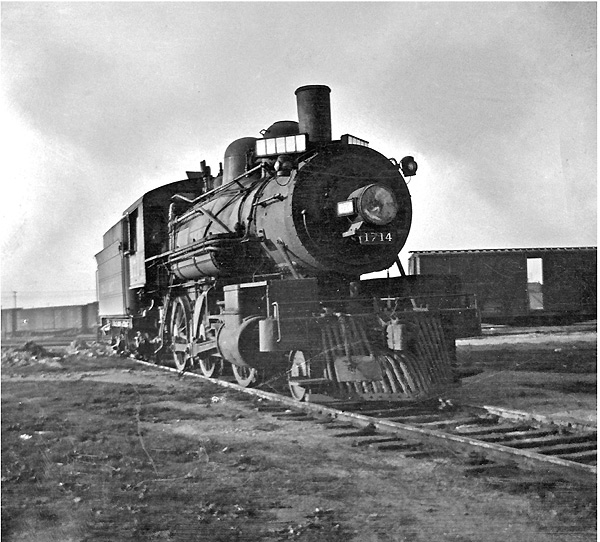 This circa 1920 photo of #1714 recently surfaced on eBay. Notice the electric headlight. Conjecturally, Robert H. McFarland recorded it about 1920, possibly at Mission Bay or Oakland January, 2017
A discovery: As it turns out, Loco 1714 appeared in an October, 1978 (pg. 7) issue of the Western Railroader. SP instituted the 90-series schedules for Ocean View Lines trains sometime between early 1910 and mid-1911, and remained conventional steam-powered trains through September, 1916, when McKeen Motor Cars began handling the runs (see:. The Elusive San Francisco - San Bruno "Loop" Motors ). Number 94 was the mid-day San Bruno Passenger out of San Francisco. In this photo, some sort of extra appliances (flag holders?) show on either side of the headlight that were not there in the Willows photo. Perhaps this may be an indicator of which photo was recorded first. Note also that the second car appears to be a steel coach. Willows and Hamilton Motor Trains
above: In 1910 Hamilton was served by a pair of "Passenger and Freight" (mixed) locals that ran to
above & below: By 1913, McKeen motors running out of Sacramento arrived at Hamilton in the evening,
|
|||||||||||||||
|
|||||||||||||||
|
|
|||||||||||||||
|
The following vintage photos come courtesy of the Willows Museum:
(the museum has several more Willows RR photos) |
|||||||||||||||
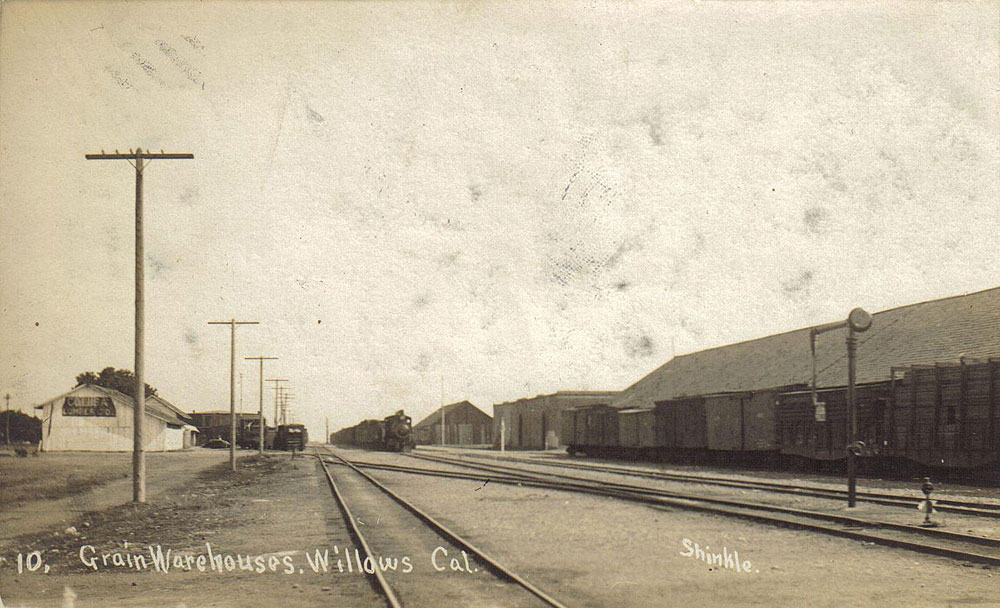 |
|||||||||||||||
The above photo was taken about the same time as the #1714 photo. The engine is standing on the main track, one track to the left of the 1714, and appears to be located about where the 1714's 7th or 8th cars were standing. On the left you can make out the SP fuel oil tank that shows in the Sanborn map in the previous thread. Sadly, no McKeen car is visible. In center foreground is the Fruto main track. |
|||||||||||||||
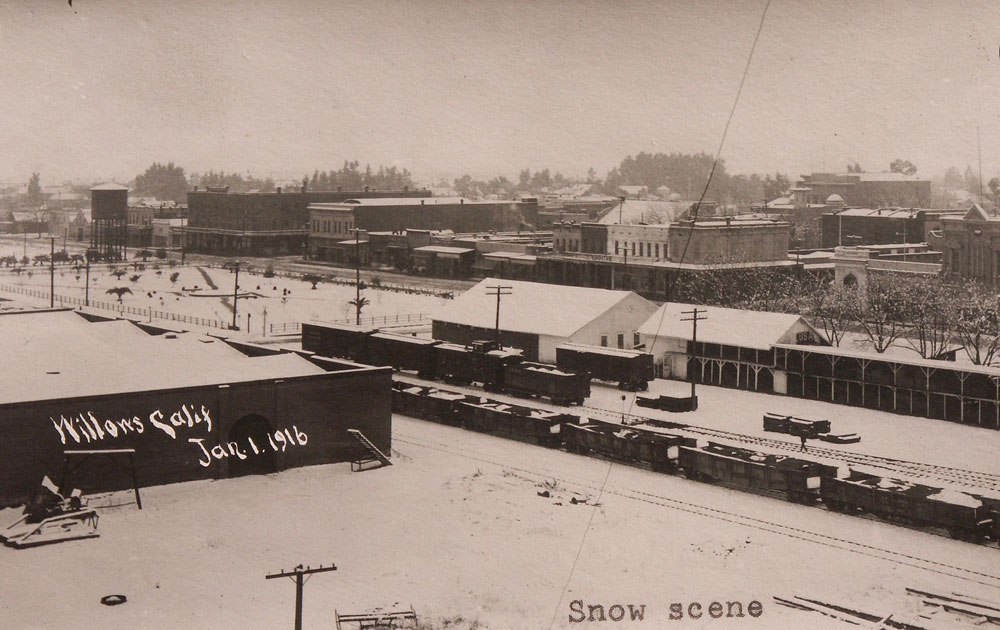 |
|||||||||||||||
|
Winter snow is a rarity in Willows. Here we are looking southwest, where the tracks crossed East Willow street. The turntable lead switch is at the extreme right. |
|||||||||||||||
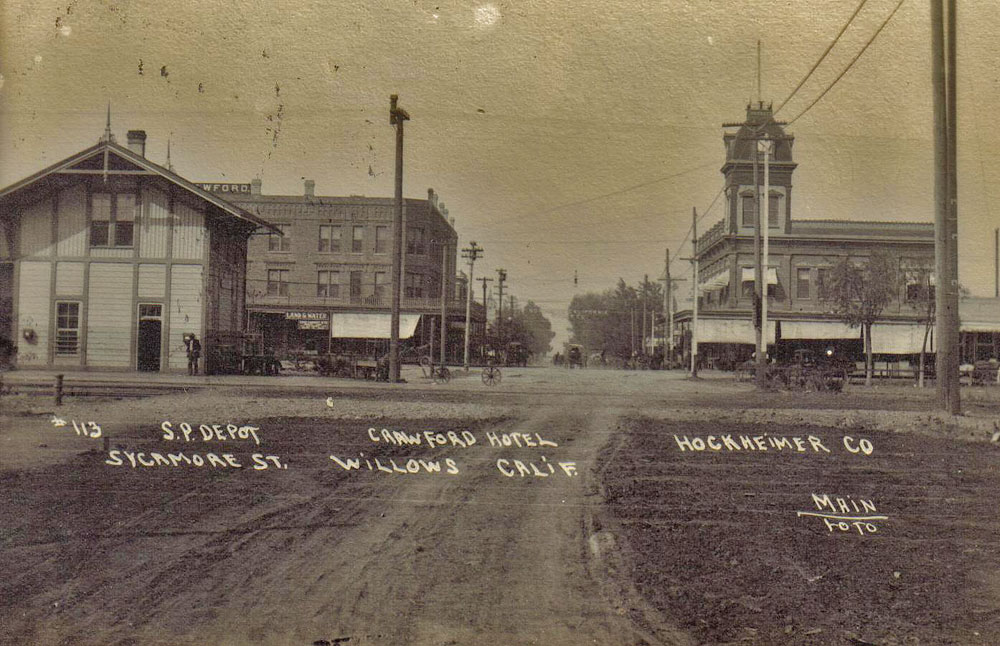 |
|||||||||||||||
|
The passenger portion of the Willows depot, possibly photographed a little earlier than the #1714 photo. The photographer was facing due west, standing in the middle of Sycamore Street. |
|||||||||||||||
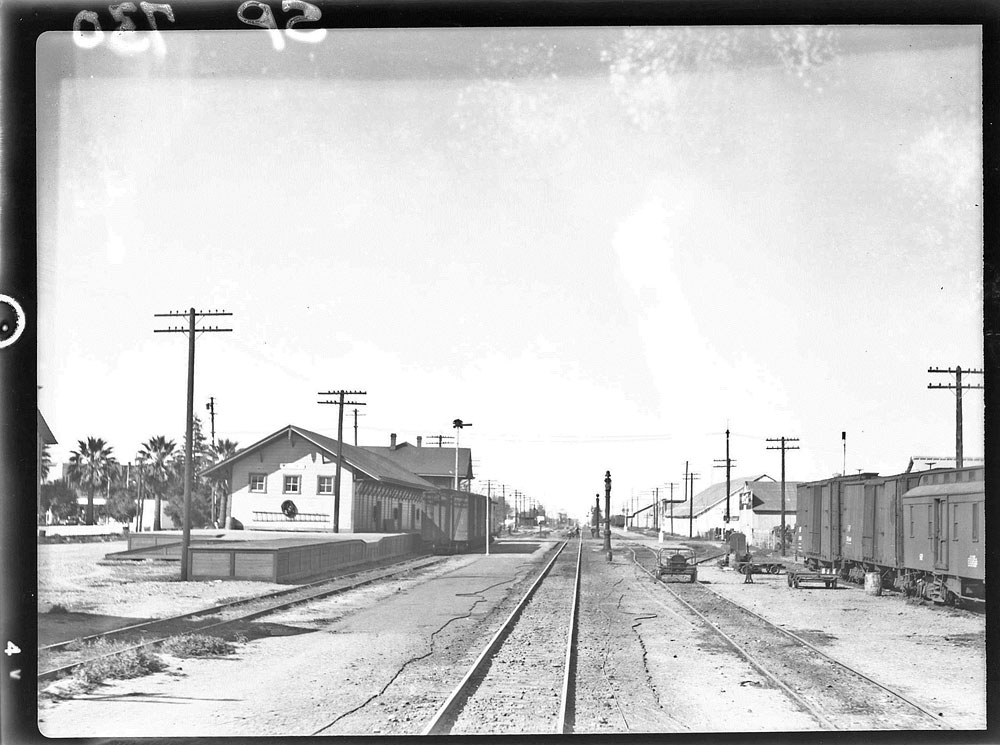 |
|||||||||||||||
This photo facing northward was taken from an open observation car platform by John Barriger III in the late 1930's, when he inspected railroads as chief examiner of the Railroad Division of the New Deal's Reconstruction Finance Corporation. After World War II, Barriger took on a succession of several railroad presidencies until shortly before his death in 1976. He literally took thousands of pictures for the RFC, which can be viewed at the University of Missouri-St. Louis's flickr site. |
|||||||||||||||
|
|
|||||||||||||||
|
The Present Day (2014), Courtesy of Google Earth:
|
|||||||||||||||
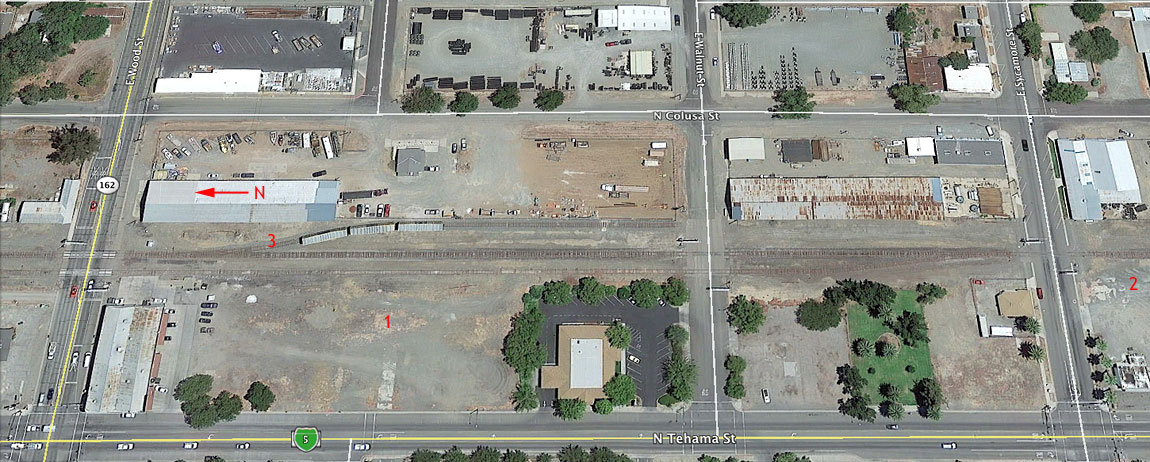 |
|||||||||||||||
Willows in 2014, of the area shown in the 1912 Sanborn map, above. 1) is the approximate site of the former turntable; 2) is the depot site (note the remaining concrete); The approximate site of the #1714 in the top photo. The track that #308 sat upon is no longer there - It was located between the present main line and the short spur track. |
|||||||||||||||

